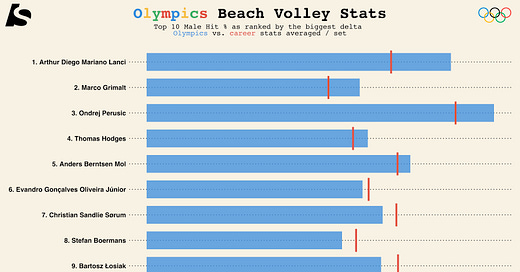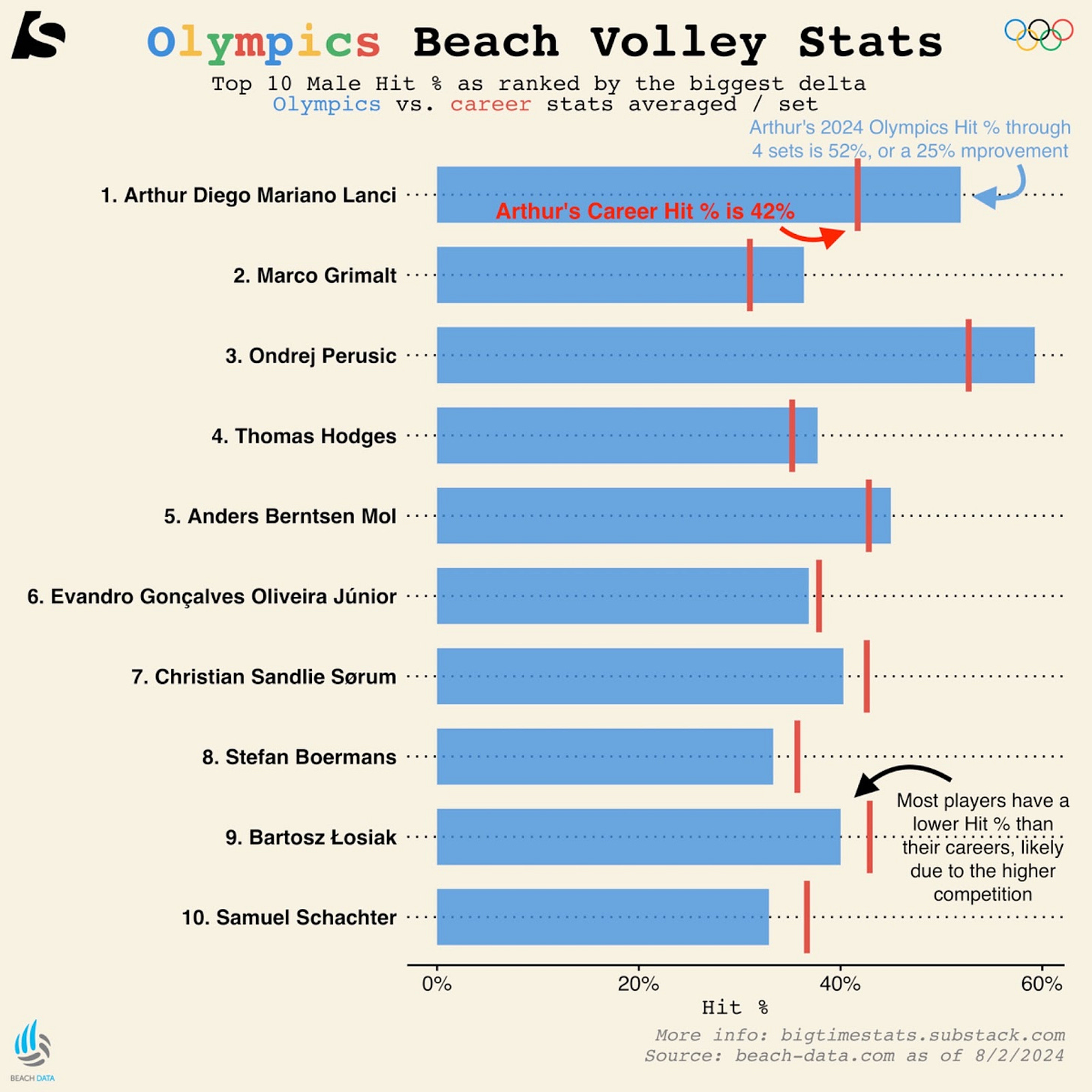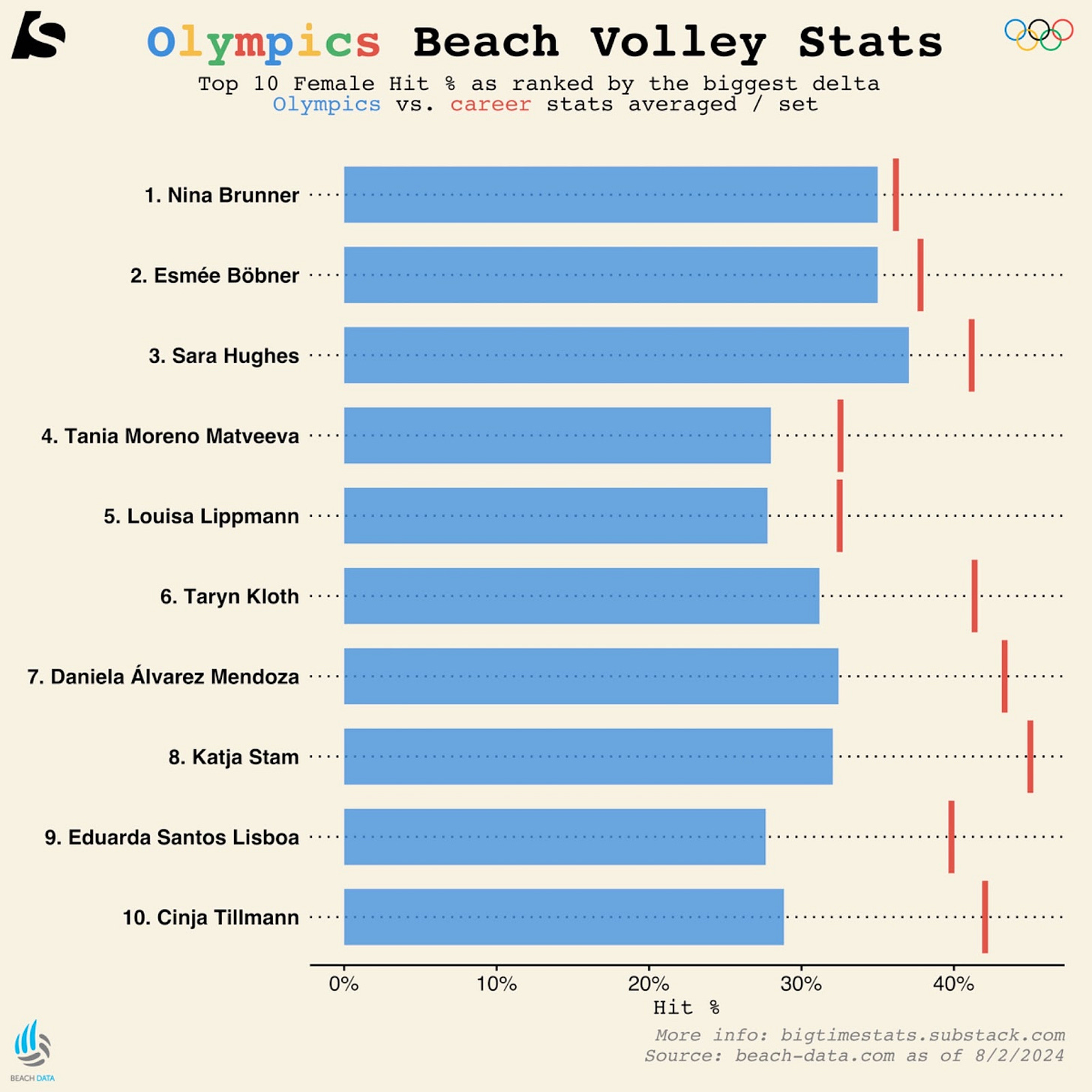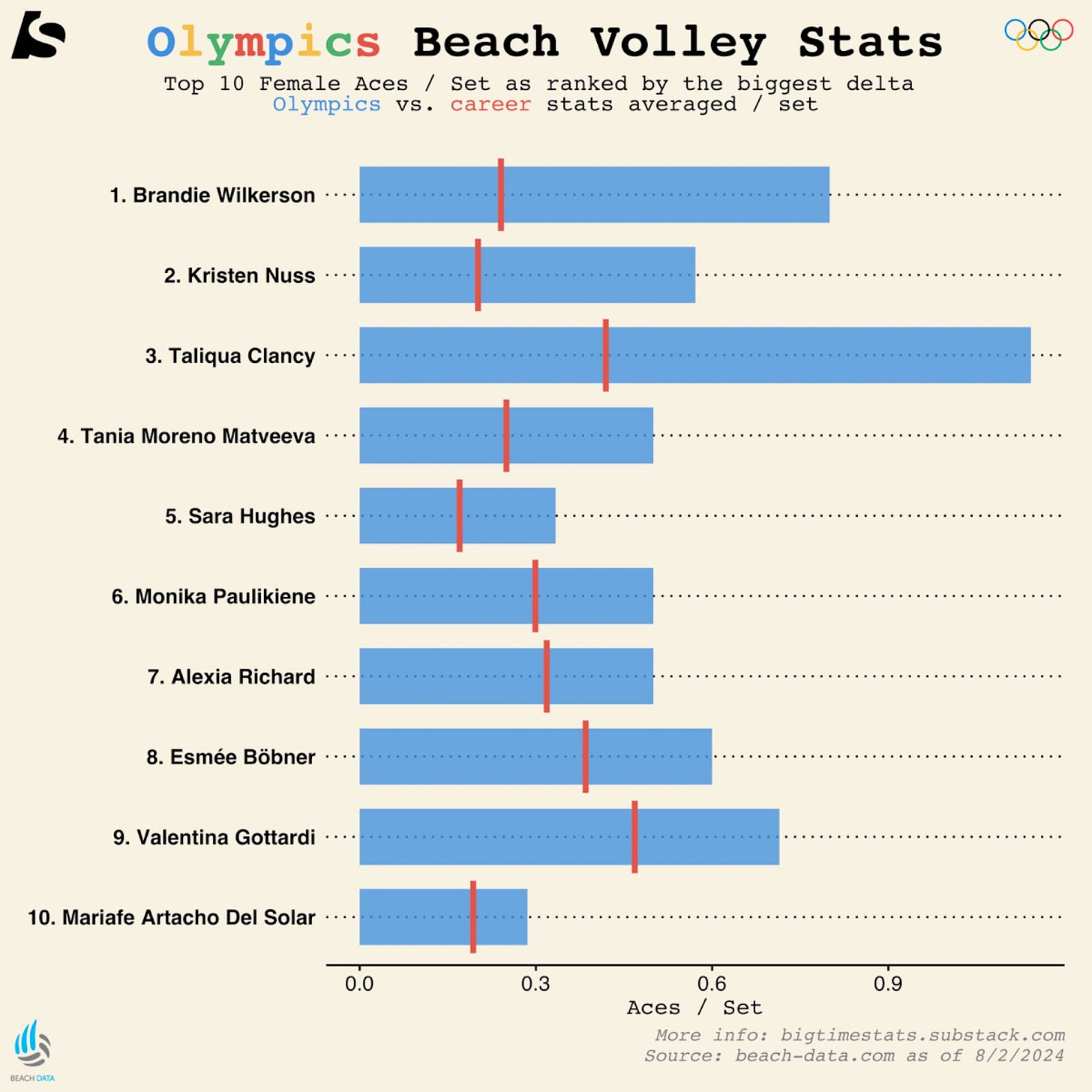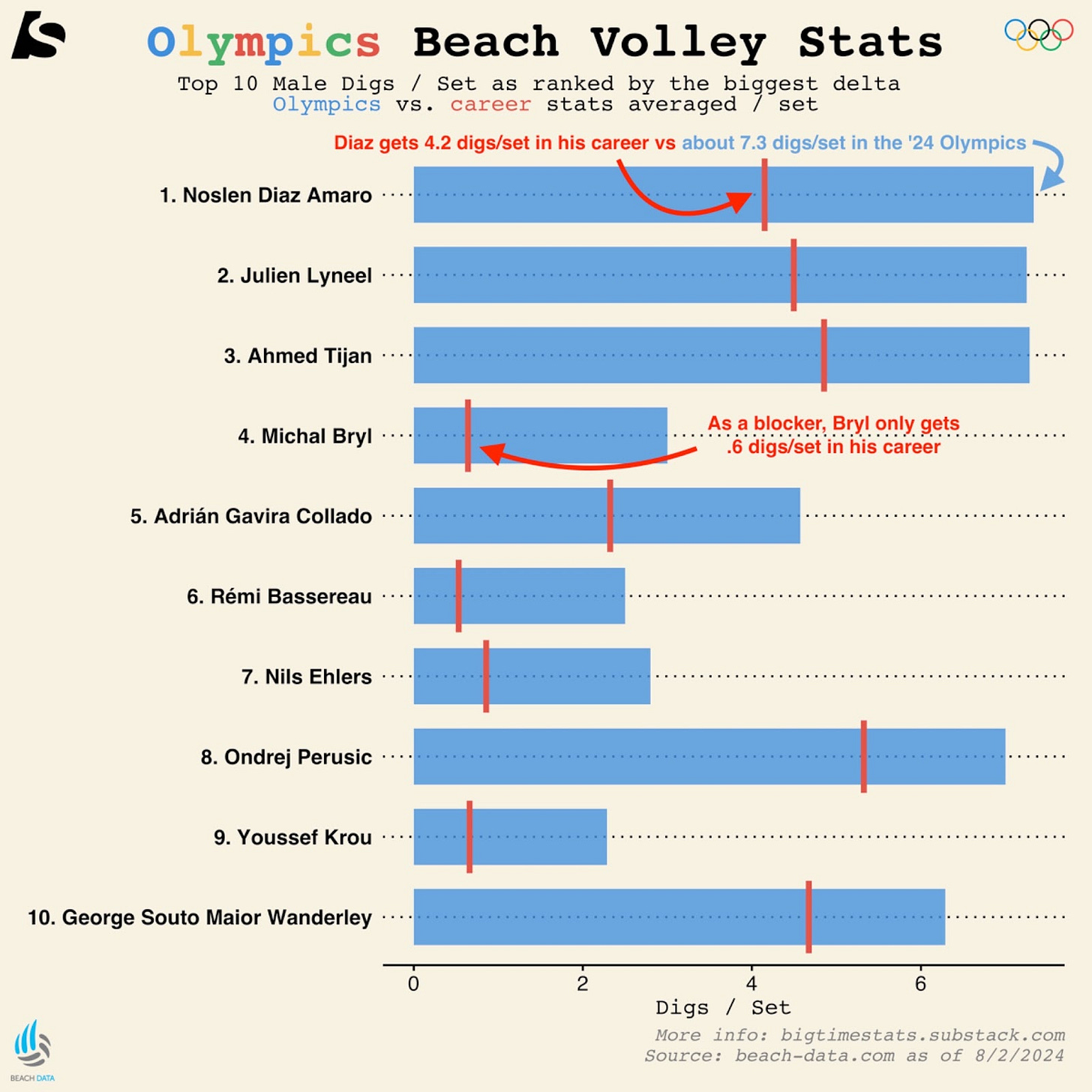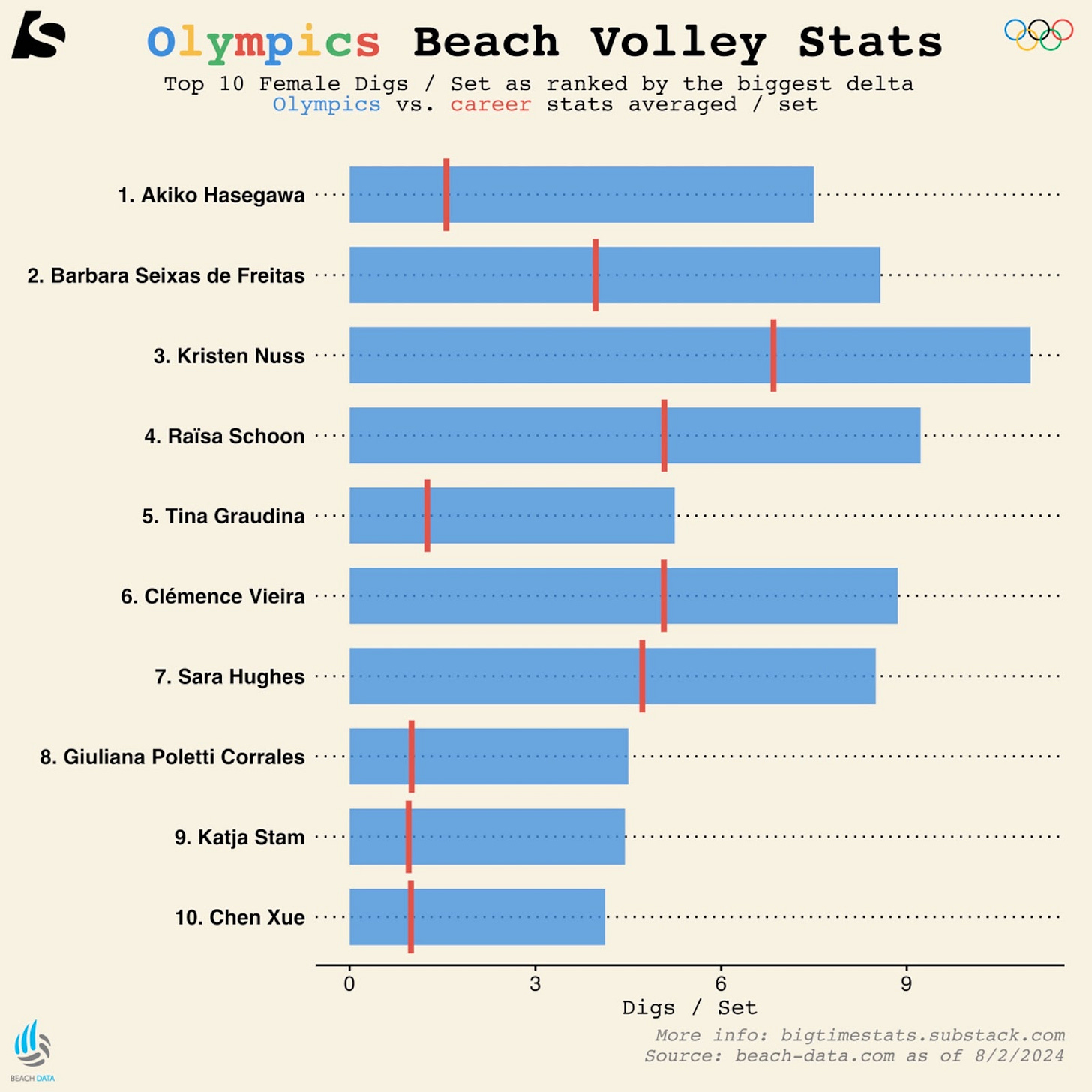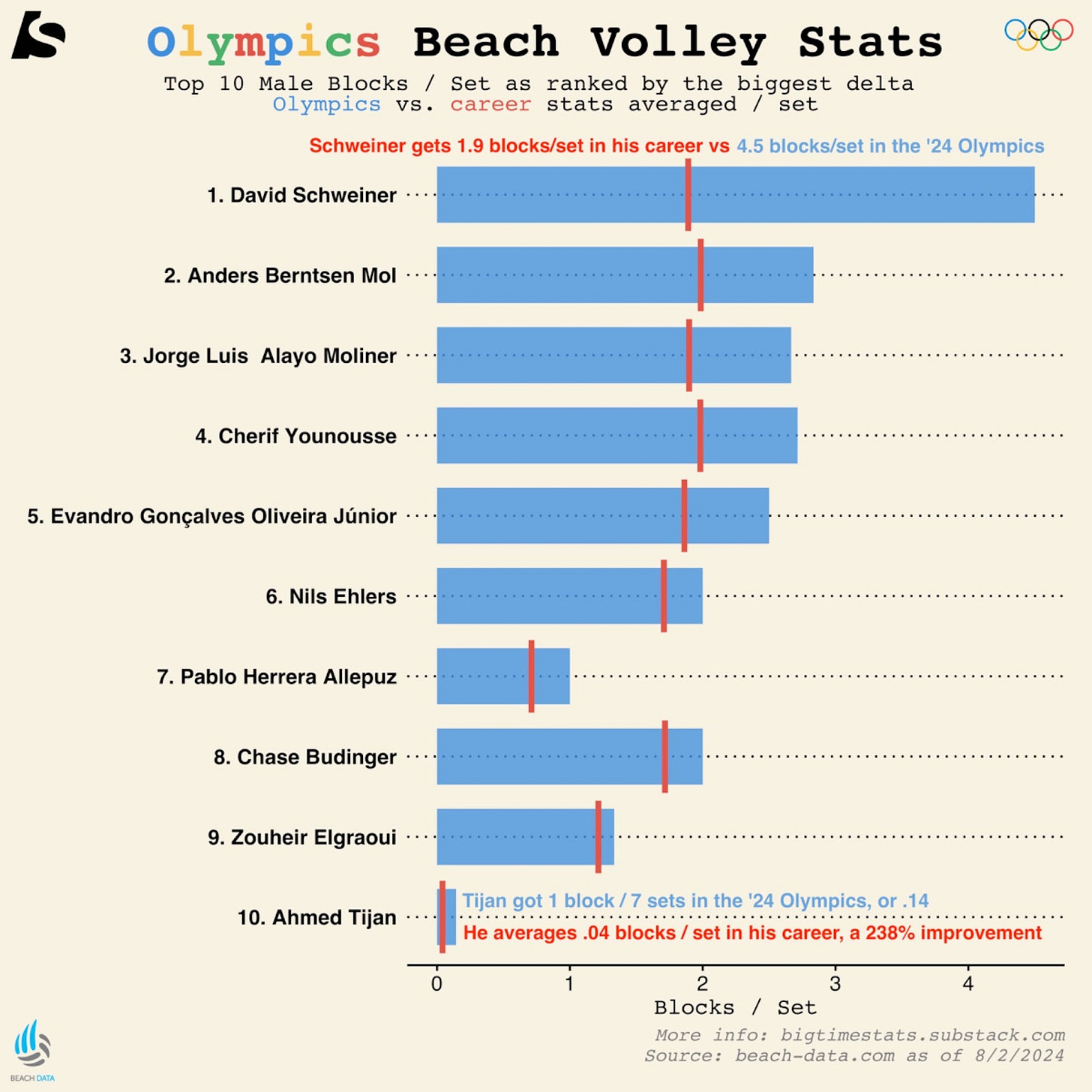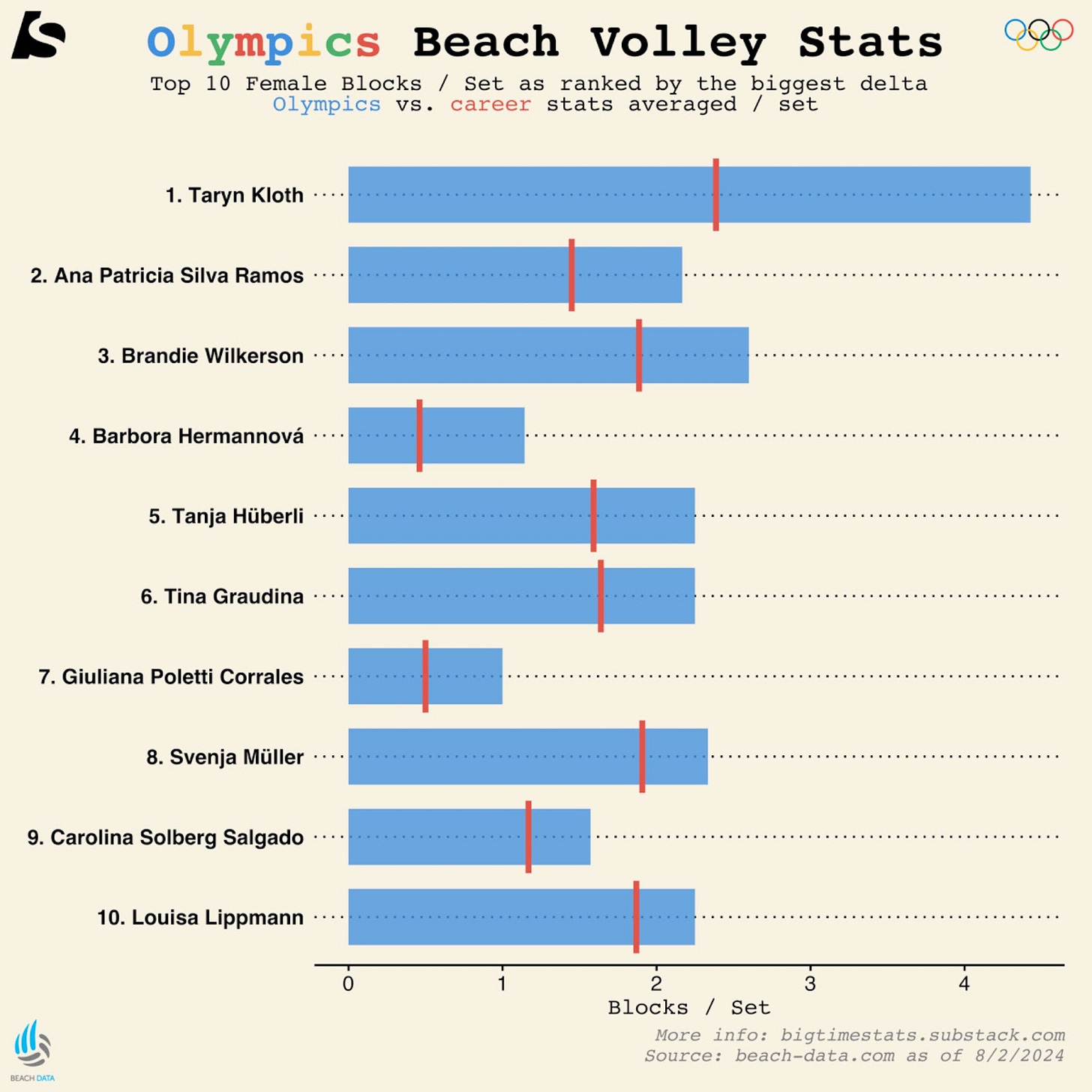Olympic Beach Volleyball Stats - Who over-performed?
Using over 3.5m unique touch data points from beach-data to better understand beach volleyball player performance
Having written previously about measuring player performance relative to career stats, I’ve applied the same methods to the Olympic Beach Volleyball pool matches.
This analysis differs from your typical sports broadcast tallying the total # of aces or blocks. It captures a player’s normalized performance per set relative to their career-based expectations.
As a viewer, these rankings can enhance your experience by providing deeper insights. You might find yourself thinking, “This player usually opts for easy float serves, but now they’re going all out with a jump serve, and the stats back it up!”
Data
The data from beach-data includes Olympic competitors who have at least 2 charted matches from Olympic pool play (as of August 2, 2024). Beach-data has individually charted FIVB matches going back to January 2023, which is used for career comparison. Given the volume of the data, care was taken to process it in the same way between pre-Olympic and Olympic matches.*
The Stats
In this analysis, we’ll compare:
Hit % - This is the player's attacking effectiveness. The higher the Hitting %, the better the player is at scoring points. Teams will generally target the weaker players. Calculated as (Kills - Hitting Errors) / # of Attacks
Aces - Point winning serves
Digs - Digs resulting in a rally, set, or attack (definition likely differs from other sources)
Blocks - Block touches resulting in a rally (definition likely differs from other sources)
So, with that out of the way, who is the most improved player compared to their career average?
Hit %
Despite the higher competition level, a few players outperformed their career averages:
Arthur (🇧🇷 Brazil): Improved his hitting % to over 52%, up from a career average of 42%, a 25% increase!
Ondrej Perusic (🇨🇿 Czech Republic): has one of the highest career hitting percentages at 53%, which he’s somehow managed to surpass over the past 4 sets played at the olympics (based on 2 matches)
Most players though, including Norway’s Christian Sorum, saw slight declines due to tougher competition, hovering near their career average of 43%.
Nina Brunner (Switzerland): leads the pack, with only a marginally lower hitting % than her typical career average of 36% compared to her cohort.
Unexpected Ace Leaders
Miles Partain (🇺🇸 USA) and Marco Grimalt (🇨🇱 Chile): traditionally not ace leaders, they’ve really stepped up their game in the Olympics, serving more aggressively than before.
In the final game of pool, you could see Miles jump spin serving, something he does not typically do
Their low career ace stats also allow them to show a much bigger % improvement and rank higher
Andy Benesh (🇺🇸 USA): has employed the jump serve in the past, but together with Miles, it’s clear the US team had a game plan to be more aggressive on serve, helping them advance to the 2nd stage of the tournament.
Ondrej Perusic (🇨🇿 Czech Republic): typically gets about .2 aces / set but has been able to get as many as .5 aces / set in the olympics, a big improvement!
Bartosz Losiak (🇵🇱 Poland): has always had a tricky serve, utilizing a similar toss for float and jump spin serves. Given he already has a high career average, it’s hard for him to improve it much further, and is therefore ranked 7th in the cohort.
Brandie Wilkerson (🇨🇦 Canada): has the biggest improvement in aces / set at the Olympics, getting .8 aces / set, a 232% improvement over her career stat of .24.
Defensive Standouts
(ranked by absolute delta: olympics - career digs)
Noslen Diaz (🇨🇺 Cuba): was getting about 4.2 digs / set heading into the Olympics. Since then, he’s gotten 7.3 digs over 3 match wins (6 sets) and is slated to move on to the bracket stage of the tournament.
Because we’re looking at the biggest absolute delta, even blockers can fill out the top 10.
Michal Bryl (🇵🇱 Poland): For example, Bryl has been getting 3 digs / set during the Olympics, lmost 3.5x more than his typical performance.
Kristen Nuss (🇺🇸 USA): already leads the cohort with >6 digs / set in her career, but she’s still been able to generate over 10 digs / set during the Olympics, ranking her in the top 3!
Top Blockers
(ranked by absolute delta: olympics - career blocks)
All the top 5-6 blockers cluster around 2 blocks / set in their careers.
David Schweiner (🇨🇿 Czech Republic): has been able to rise above his cohort to get over 4.5 block touches per set, almost 2x his typical performance!
Ahmed Tijan (🇶🇦 Qatar): rounding out the top 10 is a defender who has a positive delta given his 1 block / 7 sets in the Olympics, showing a marginal increase.
Taryn Kloth (🇺🇸 USA): leads both the women’s career and Olympics blocks / set. Blocking so well and putting pressure on her opponents has also allowed her partner, Kristen Nuss, to land on the defensive leaderboards.
Notes
Although based on small sample sizes, it’s informative to identify top overperformers relative to their typical performance across a range of match stats. This data can also help inform opportunity areas for players if they aren’t matching their typical stats.
Some minor variation exists between beach-data and other external data sources such as BVBInfo, likely due to the subjectivity of logging successful digs, blocks, and other actions. Given the same logic is used across Olympic and pre-Olympic performances, I’d expect the beach-data dataset to be internally consistent for comparison.

